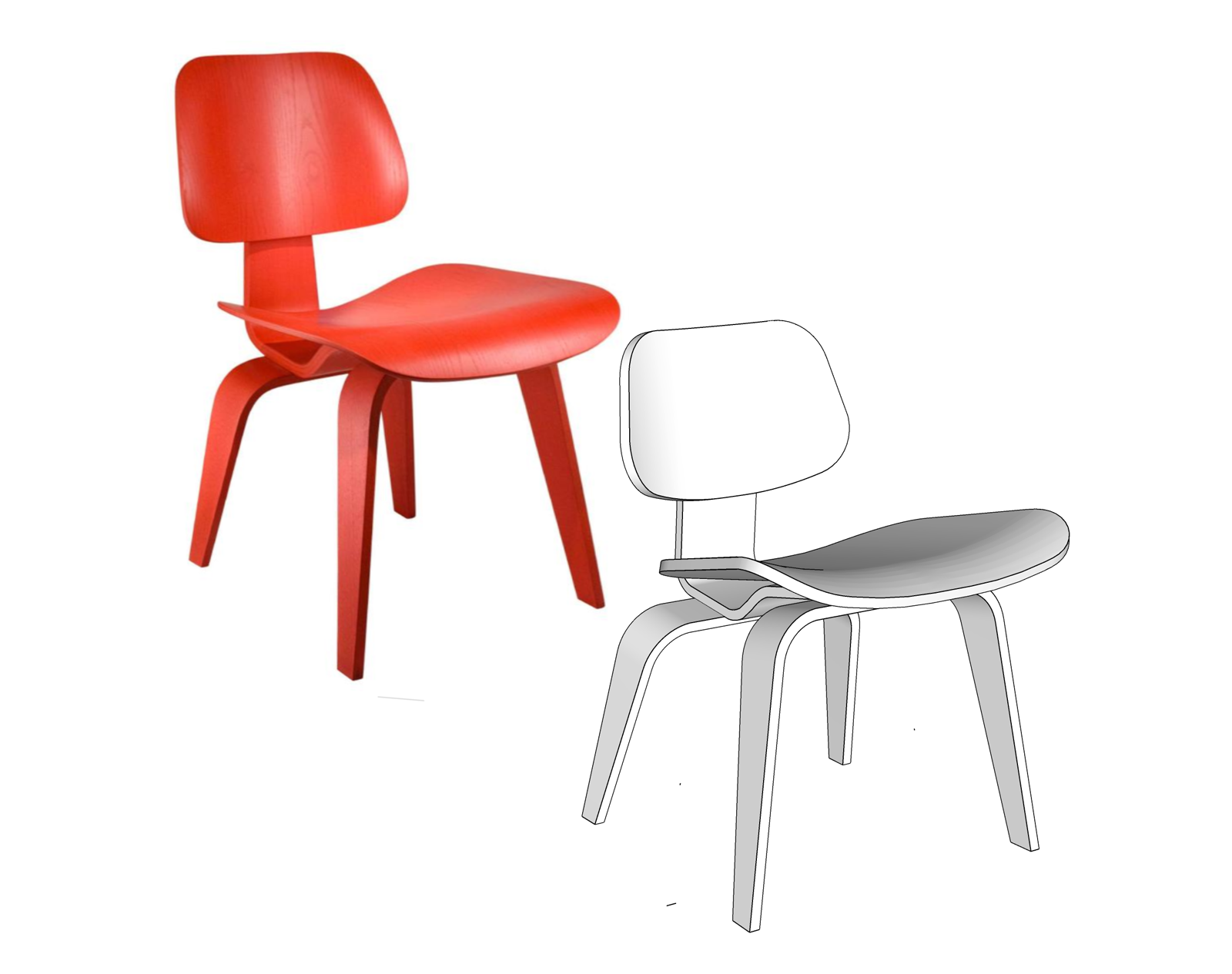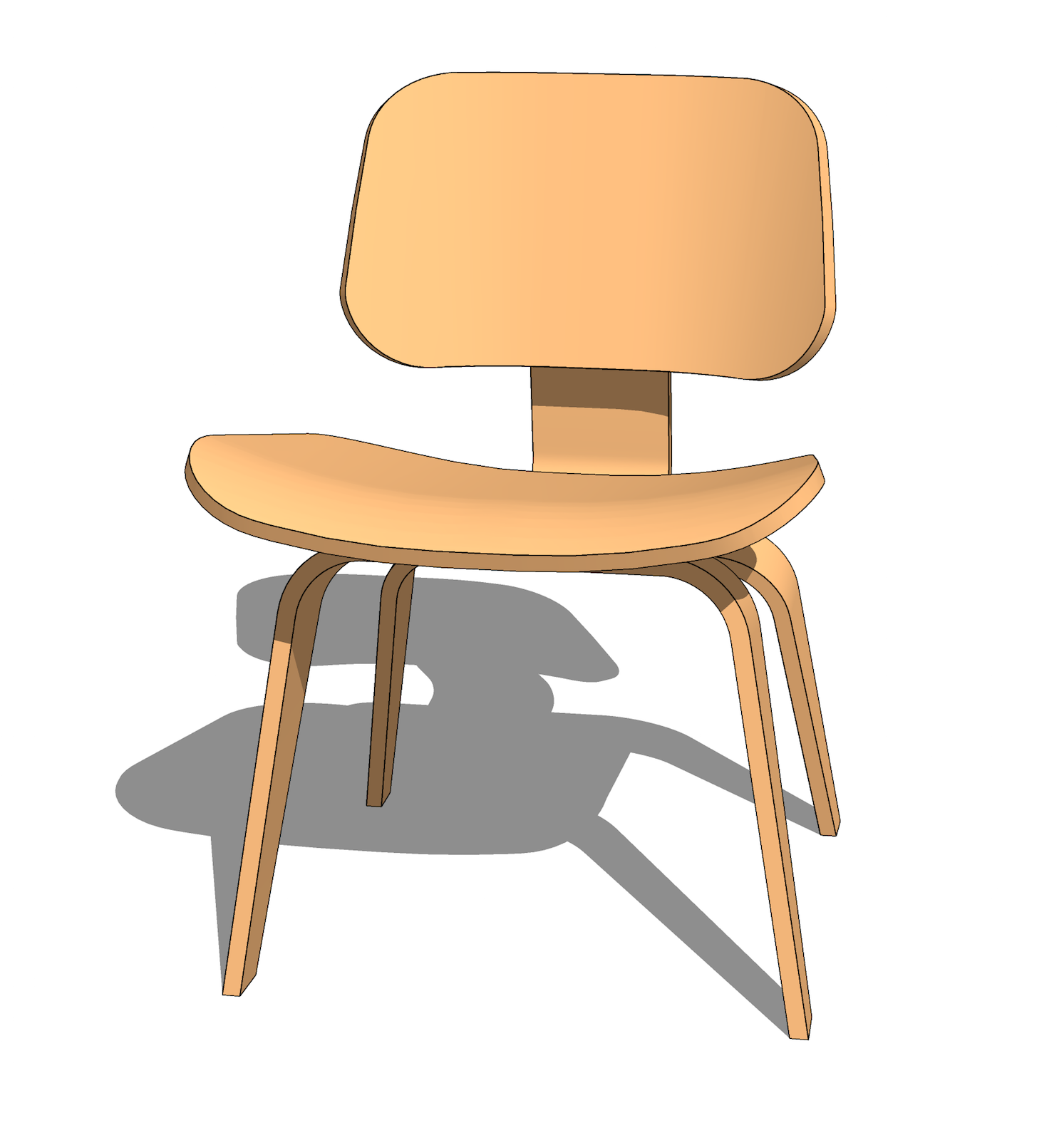Eames chair
-

I recently did a model of a coffee table that Charles Eames designed in the 1940s. The legs are dead ringers for those on one of his molded-plywood chairs. So of course I had to try to model the chair, too, even though there are already several other models of this chair on the 3D Warehouse. The Fredoscale plugin proved invaluable for shaping the seat and back. I'm close, I think. What do you think?
Best,
dh -
Very nice, David. I like the look of yours.
-
Looks great David
 . Looks better than a couple of the models I've downloaded in the past.
. Looks better than a couple of the models I've downloaded in the past. -
Thank you, gentlemen. I think I might take another stab at the back piece; it looks a little small to me.
Best,
dh -
already on your "Very bent wood" post I had no idea how to do what you do


and so it is here as well

@davidheim1 said:
...I'm close, I think. What do you think?...
Yes you are and again I enjoy your work -
@davidheim1 said:
Thank you, gentlemen. I think I might take another stab at the back piece; it looks a little small to me.
Best,
dhGreat work mate! The only critism would be what you have already noted, the back piece support being a bit wide. I think I will have a closer look at fredo scale after seing this work

-

Redid the back piece.To answer HornOxx: How do I do what I do?
I look for pieces that contain some challenge: an elaborate turning, bent wood, and so on. Or, I'll model a classic piece by a well-known architect or designer. There's a bit of masochist in me, so I'll look for complicated pieces just because they're complicated. This started a decade ago, when I got it into my head that I wanted to model a bombe chest. I did it, but only after three weeks of work and an enormous amount of help from Dave Richards (who will always know more than I do).
I look for images that I can copy, import, and scale. That means a good front or side view, close-ups of turned elements and hardware, plus enough basic dimensions to allow me to get started. I'll import the image, scale it with the tape measure tool, then trace over as many elements as I can.
Mr. Richards often tells people to work from the ground-plane up. But if I'm modeling a table, I'll start with the top and work down to the ground. This allows me to adjust and interpolate dimensions for stretchers and legs. For a chair, I need good images that will allow me to trace the back and front legs.
After that, I make up stuff. That is, I make my best guess at the size of some element and work it into the model. I also try to imagine what joinery would be used in the real piece and add that.
I often have to tweak the model or the dimensions for particular elements because of parallax. Real life, like the SketchUp drawing space, is a world of 3-point perspective. Our eyes see table legs as parallel, but photos will show them slightly skewed because of perspective. Again, I'll make up stuff to try to create a pleasing, logical element like a leg or chair stretcher.
As I work, I'll rotate the model to try to match the viewpoint of the images I have. If something in the model doesn't look quite right, I'll redo it.
Best,
dh -
Thank you for the detailed description of your style of working. I like this mixture of "not too easy" with a high quality claim(?) - and this can be seen well in your works...
always a pleasure!
-
Many thanks for the good words, HornOxx. Much appreciated.
dh
Advertisement







